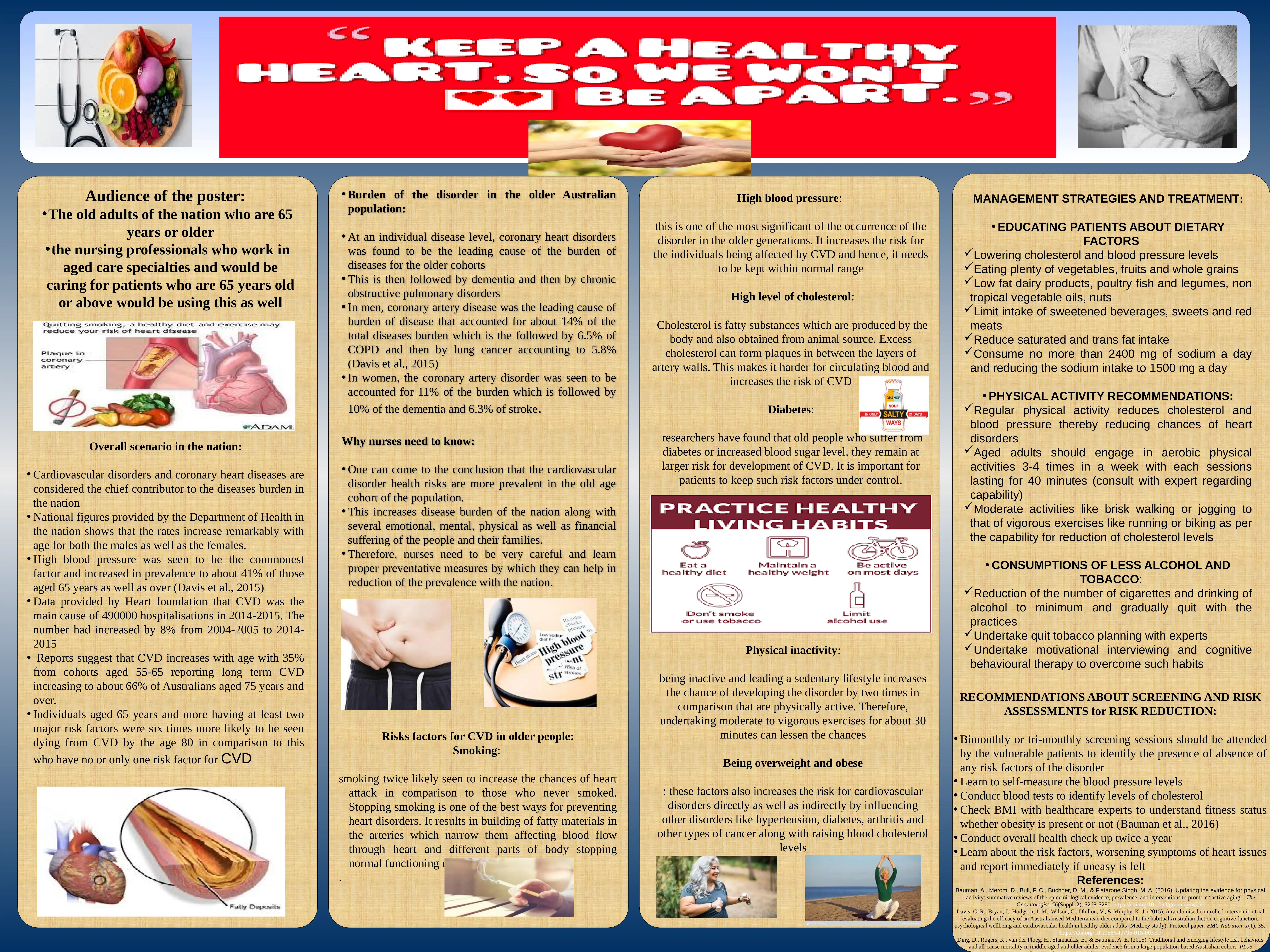Preventing Cardiovascular Disorders in Older Adults: Management Strategies and Treatment
VerifiedAdded on 2023/06/04
|1
|1253
|215
AI Summary
This poster aims to educate the older adults of the nation and nursing professionals about preventing cardiovascular disorders. The poster highlights the overall scenario of the nation, burden of the disorder in the older Australian population, and why nurses need to know. It also provides information on the risks factors for CVD in older people and management strategies and treatment for high blood pressure, high level of cholesterol, diabetes, physical inactivity, being overweight and obese, and smoking. The poster concludes with recommendations about screening and risk assessments for risk reduction.
Contribute Materials
Your contribution can guide someone’s learning journey. Share your
documents today.
1 out of 1







![[object Object]](/_next/static/media/star-bottom.7253800d.svg)